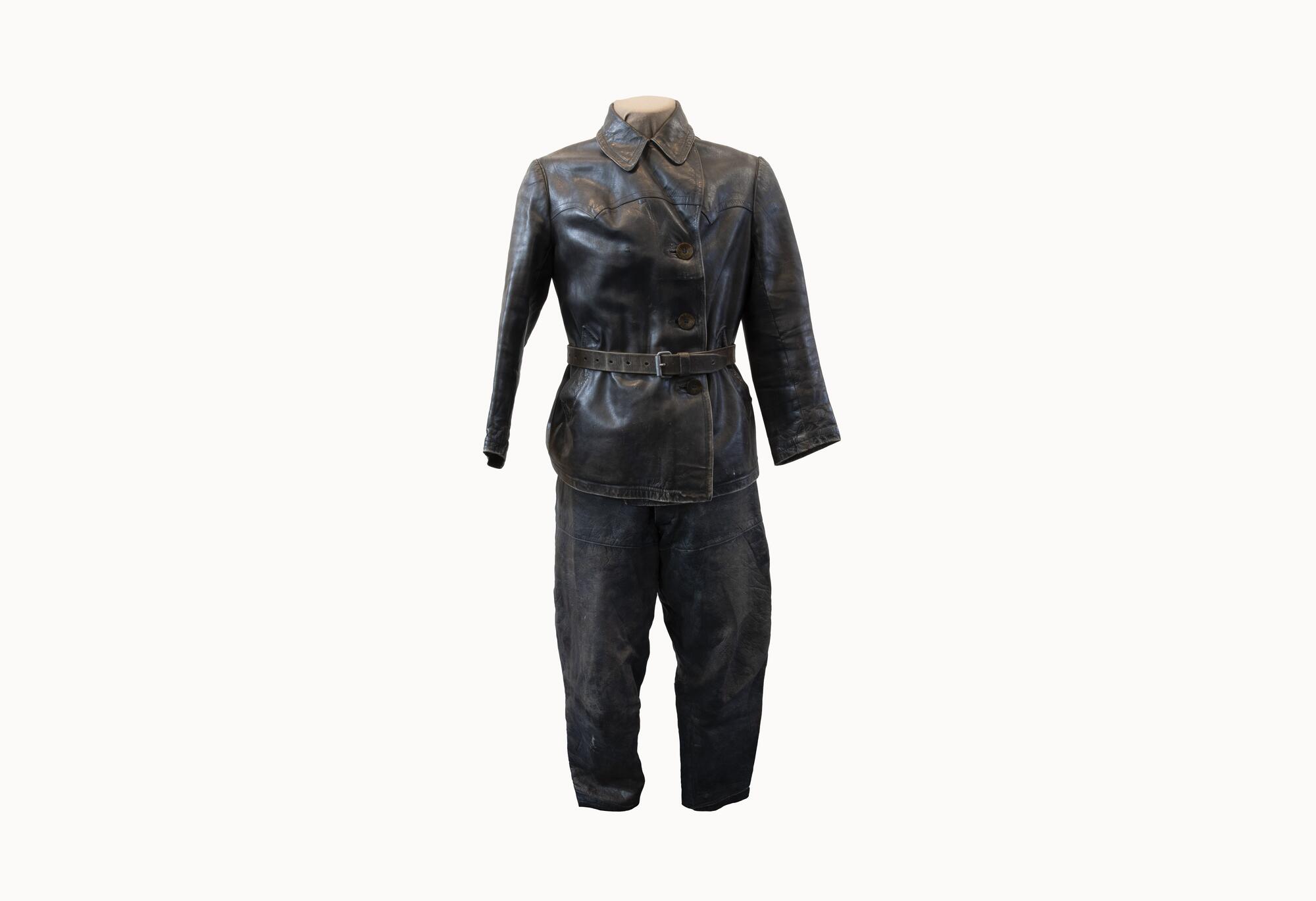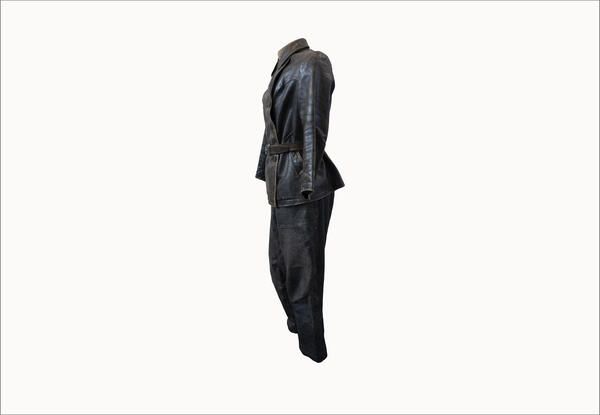This leather jacket is an artefact of the 1920s displayed in one of the halls of the historical and literary exhibition “Mikhail Sholokhov: Time and Fate”. This jacket was donated to the museum-reserve by Aleksey Grivanov, an expert in the history of the Vyoshenskaya stanitsa, from his private collection.
Leather jackets, which initially were the uniform of aviators and drivers during World War I, became the symbol of revolutionary fashion devoid of traditional gender stereotypes: this outfit was characterized by being equally suitable for men and women alike. The material was very important: it was waterproof, wrinkle-free, and wind-resistant. A leather jacket was the dream of many people, and it was not easy to find. During the Russian Civil War and the early period of the New Economic Policy, this clothing was in great demand at second-hand markets.
New party workers and Komsomol activists were particularly fascinated with leather jackets. The revolutionary outfits also attracted the representatives of the urban middle classes who wanted to associate with the “proletarian culture”. And, of course, it was popular among young people. For many of them, wearing a leather jacket was the symbol of changing their social attitude.
In the second half of the 1920s, the situation changed dramatically. The leather jacket was no longer considered fashionable and enviable. It became the symbol of poor living conditions and forced asceticism only appropriate during wartime. This indicated that society was facing demilitarization and improved quality of life.
In the 1930s and 1940s, leather outfits could once again be seen on the streets of Soviet cities, but they were worn exclusively by military people. At the end of the war, they were also a social identity marker which had a new meaning. Workers of people’s commissariats could be recognized by their brown leather coats. These were delivered by the United States through Lend-Lease together with vehicles. The latter were sent to the front line while the leather coats remained in Moscow. Still, they were rarely worn by women and mostly found in the traditional male outfit.
In the Soviet Union, leather clothes got their unisex status back only in the 1970s. Later, in the 1980s and 1990s, they once again became associated with rebellion, freedom, and revolution, but this time it was in the cultural context.
Leather jackets, which initially were the uniform of aviators and drivers during World War I, became the symbol of revolutionary fashion devoid of traditional gender stereotypes: this outfit was characterized by being equally suitable for men and women alike. The material was very important: it was waterproof, wrinkle-free, and wind-resistant. A leather jacket was the dream of many people, and it was not easy to find. During the Russian Civil War and the early period of the New Economic Policy, this clothing was in great demand at second-hand markets.
New party workers and Komsomol activists were particularly fascinated with leather jackets. The revolutionary outfits also attracted the representatives of the urban middle classes who wanted to associate with the “proletarian culture”. And, of course, it was popular among young people. For many of them, wearing a leather jacket was the symbol of changing their social attitude.
In the second half of the 1920s, the situation changed dramatically. The leather jacket was no longer considered fashionable and enviable. It became the symbol of poor living conditions and forced asceticism only appropriate during wartime. This indicated that society was facing demilitarization and improved quality of life.
In the 1930s and 1940s, leather outfits could once again be seen on the streets of Soviet cities, but they were worn exclusively by military people. At the end of the war, they were also a social identity marker which had a new meaning. Workers of people’s commissariats could be recognized by their brown leather coats. These were delivered by the United States through Lend-Lease together with vehicles. The latter were sent to the front line while the leather coats remained in Moscow. Still, they were rarely worn by women and mostly found in the traditional male outfit.
In the Soviet Union, leather clothes got their unisex status back only in the 1970s. Later, in the 1980s and 1990s, they once again became associated with rebellion, freedom, and revolution, but this time it was in the cultural context.





